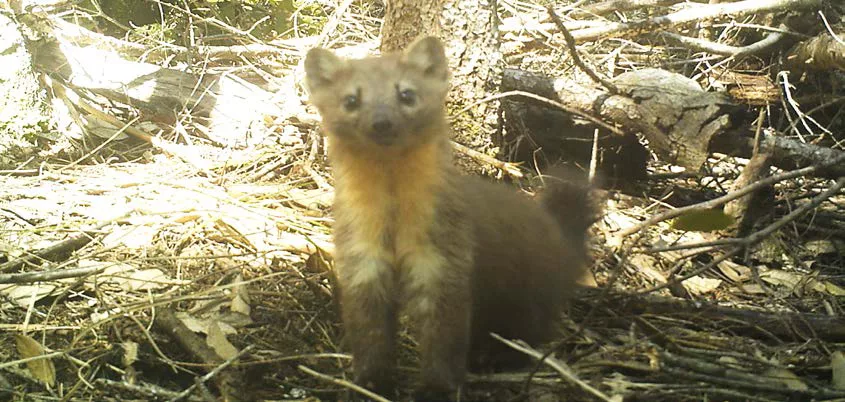Photo: Charlotte Eriksson / Oregon State University
PORTLAND, Ore.— Following a court-ordered agreement, the U.S. Fish and Wildlife Service today designated more than 1.2 million acres of critical habitat in northwestern California and southwestern Oregon for threatened Humboldt martens, also known as coastal martens.
“I’m happy that Humboldt martens finally have protection for some of the most important places where they live,” said Chelsea Stewart-Fusek, an attorney at the Center for Biological Diversity. “But it shouldn’t have taken multiple lawsuits to get here. It’s also extremely disappointing that the Service continues to give special treatment to timber companies, which are largely responsible for the martens’ decline in the first place.”
Today’s critical habitat designation calls for five units of protected habitat where martens are known to still live. This includes acreage in Coos, Curry, Douglas, Josephine, Lane and Lincoln counties in Oregon, and Del Norte and Siskiyou counties in Northern California.
But in addition to only including occupied habitat, the Service excluded more than 49,000 acres of land owned by the timber company Green Diamond Resources. This is based primarily on a safe harbor agreement it has with the state of California.
The agreement, in part, exempts Green Diamond lands from the critical habitat designation in exchange for monitoring, creation of a 2,100-acre reserve on land that is mostly unsuitable for logging or martens, and a highly speculative proposal to relocate martens to national and state parks.
“Martens are on the brink of extinction, and with most of their habitat lost to logging, their populations can’t expand,” said Stewart-Fusek. “If these animals are going to recover, they’re going to need more than the disconnected habitat fragments the Service just protected.”
Humboldt martens are elusive, cat-sized members of the weasel family. Once common in coastal forests in Northern California and Oregon, the animals were nearly wiped out by logging and widespread trapping. Today, fewer than 400 of these amazing carnivores remain, in just four highly isolated fragments of the species’ historic habitat.
Background
The Center and the Environmental Protection Information Center (EPIC) petitioned in 2010 to list the Humboldt marten as a protected species under the Endangered Species Act, but the Service delayed actually protecting the animal until 2020.
Martens are threatened by the ongoing logging of mature forests, loss of closed-canopy habitat to wildfires, rodent poison used in marijuana cultivation, and vehicle strikes.
Today’s critical habitat designation includes 13,233 acres in the Oregon Dunes National Recreation Area, where the U.S. Forest Service authorizes annual events where thousands of off-road vehicles drive through and damage marten habitat. In March the Center notified the Forest Service of its intent to bring litigation to protect the marten and its critical habitat in the Oregon Dunes.
California banned trapping of Humboldt martens in the 1940s, but Oregon did not follow suit until 2019 after a petition and lawsuit from conservation groups. The animals have been wiped out from 93% of their historic range.





